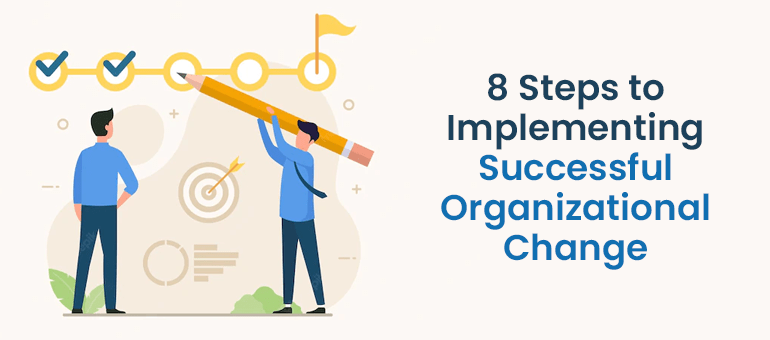Growing a business demands frequent modifications to tackle the ongoing competition and other related issues. It not only helps in a smoother transition but also boosts the overall morale of the company.
A quality organizational change process protects the company from further losses and avoids missing any chance to improve productivity. Whenever a change occurs in a company, it should be applied masterfully. If it doesn’t happen, the results can be devastating in terms of overall revenue.
This post will explain the top 8 steps to implementing successful organizational change for better results. Go through the article and learn lots of crucial knowledge.
Identifying the Issue
The most important step to performing a great organizational change is recognizing the problem and having an urgency to eliminate it. To do so, there is a need for open communication between the team members. Talk with the team to support the need and find the main points.
Real data and statistics are available to support the goal of changes required in a company. Make sure there is no room for mistakes while implementing these modifications.
Proper Employee Involvement
The change can only be supported when every organization employee is involved in the cause. Whether the company is small or large, a modification affects the performance of employees for better results.
The employee’s experience benefits the overall process and reduces the cost. They should be aware of the motive behind these important changes.
Giving Reasons for Modifications
If you want to gain the support of employees, it is essential to elaborate on the reasons behind making the change. The ideal method to complete this task is to show data and what benefits can be enjoyed by applying these modifications.
Data can show surveys, business goals, and budget plans to prove the worthiness of this plan. Show them the benefits of change on their work and productivity. It will make them motivated to adapt to the changes adequately.
Taking Employee Feedback
Once you have communicated the required steps to your employees, allow them to give feedback after some time. You can consider conducting in-person meetings and scheduling zoom meetings and surveys for improved results.
There is a chance a few people in your team got nervous due to these changes. Giving them a chance for feedback will provide them with confidence and assist in clearing any misunderstandings at a later stage.
Implementation
When all the necessary measures involved in the organizational change get cleared, it’s time to implement it. Please ensure a proper timeline is made, and all the necessary steps are completed without delay.
For example, there is a requirement to upgrade Windows in the system. It needs to be ensured that all the employees get proper training before installing the latest Windows on all the computers or laptops.
Creating Short-Term Mini Goals
Establishing short-term mini-goals can result in long-term milestones very quickly. You can think about opting for daily goals and assigning different members to different jobs. They are critical for achieving core goals that are important for successful implementation.
Rewards should be given to employees for completing short-term goals at a quicker rate. It can be seen as a token of appreciation for better employee engagement.
Empowering Actions
It is essential to keep the enthusiasm and excitement higher during the process. It would help if you inspired the team to make things amazing for them. Leaders should take the required actions with creativity and courage.
Stay open to acknowledging employees’ fears and perform the desired steps to eliminate them. Also, please respond to the suggestions and ideas of employees to let them feel important in this process.
Eliminating Barriers
It is common to face many problems during implementation from the start to the bottom. These barriers need to be eliminated frequently for successful organizational change. It includes inadequate training, low supply needs, lack of engagement, and other similar issues.
A common problem that companies face is the difficulty employees and management must tackle these obstacles properly. You will find many employees who don’t accept changes and want to keep things the same. However, such barriers must be eliminated by making necessary decisions for the company’s welfare.
If you end up completing the organizational change successfully, there is a reason to celebrate for sure. Enjoying small changes can help in building momentum for future tasks.
In Conclusion
The main motive behind organizational changes is improving the productivity and profits of the company. Implementing these changes effectively will also ensure a better environment with extra motivation among staff members.
What do you feel regarding the strategies mentioned in the post? Feel free to give your views in the comment section!



